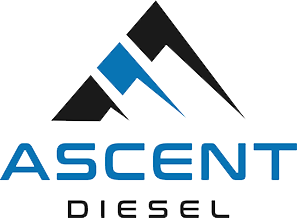So I was thinking about how many wallets out there claim to be “the one” for Solana users, but really, not all are built the same. Seriously, some just feel clunky when you’re juggling NFTs and DeFi apps. Something about the flow just never sits right. My instinct said there had to be a better way, especially when you’re deep into Solana’s ecosystem, where speed and security aren’t just perks—they’re essentials.
Wow! Let me tell you, the moment you dive into dApp integration on Solana, you quickly notice how transaction signing can either make or break your experience. Initially, I thought it was all about fancy UI, but actually, wait—let me rephrase that—it’s more about seamless backend communication that keeps you in control without slowing you down. On one hand, you want simplicity; though actually, it’s the nuanced way wallets handle cryptographic signatures that really sets some apart.
Here’s the thing. When you’re using a wallet that integrates smoothly with Solana dApps, every click feels intuitive. The wallet recognizes the app, prompts you naturally, and signs transactions without extra hoops. It’s kinda like having a savvy assistant who knows your habits. I’m biased, but Phantom Wallet nails this better than most. If you want to peek under the hood, check this link here. It’s not just marketing fluff; there’s genuine thought put into how they handle the nitty-gritty of signing transactions securely yet effortlessly.
Okay, so check this out—NFT marketplaces on Solana have exploded recently. But here’s what bugs me about some wallets: they either slow down when you try to mint or transfer NFTs, or the process is so complicated it feels like you need a PhD in blockchain. Phantom’s approach is different. It integrates directly with marketplaces, so you’re not jumping between apps or dealing with weird approval screens that make you hesitate.
Sometimes, I feel like wallets forget the human on the other side. You want to enjoy your NFT drops or DeFi swaps, not wrestle with confusing prompts or endless confirmations. The best dApp integrations anticipate your moves while keeping security tight. It’s a tricky balance. At first glance, you might think all wallets can do this, but the devil’s in the details—like how Phantom manages Ethereum-compatible signatures alongside Solana’s unique transactions.

Why Transaction Signing is More Than Just Clicking ‘Approve’
Transaction signing might sound boring, but it’s really the gatekeeper of your crypto assets. When you hit “sign,” you’re essentially giving permission for your tokens or NFTs to move. If the wallet handles this step poorly, you risk delays, errors, or worse—security vulnerabilities. I’ve seen folks get nervous because the wallet asks for multiple confirmations or throws obscure errors.
Something felt off about older wallets—they seemed designed for techies, not everyday users. Phantom’s model flips that on its head by embedding dApp integration right into the wallet UI, so you don’t feel like you’re jumping through hoops. The signature requests are clear, contextual, and sometimes even educational. You get why you’re signing before you do it.
Here’s a wild thought: what if wallets started customizing transaction prompts based on your usage patterns? Imagine the wallet saying, “Hey, this is your usual NFT marketplace, here’s the usual fee, just confirm.” That kind of smart integration would feel like magic. Phantom is inching towards that with their UX tweaks, and honestly, it’s refreshing.
On a side note, the speed of transaction confirmation on Solana is a game-changer. It’s lightning fast compared to Ethereum’s congestion headaches. But you still need a wallet that doesn’t bottleneck that speed. Phantom’s lightweight design and dApp-centric integration help keep that pace, so you’re not waiting around, especially during NFT drops or DeFi yield farming.
Navigating NFT Marketplaces Without the Headache
NFTs can be messy. Different collections, varying royalties, multiple marketplaces—it’s easy to get overwhelmed. The wallet you choose has to act like a reliable guide, not a roadblock. That’s where Phantom shines—it integrates natively with top Solana NFT marketplaces, giving you a dashboard that’s easy to scan and manage.
Honestly, I wasn’t sure if the wallet’s marketplace integration would be a big deal until I tried buying a rare Solana NFT during a peak drop. The process was so smooth I barely noticed the typical tension of minting. Contrast that with other wallets where you’re nervously refreshing your screen, or worse, losing the deal because the wallet choked mid-signature.
By the way, if you’re looking for a wallet that understands the pulse of Solana’s NFT scene, you’d do well to explore Phantom. I’m not saying it’s perfect, but it’s definitely ahead of the pack. Plus, they keep improving, which is rare in this space.
Oh, and by the way, the whole experience feels more like using a well-designed app than fiddling with a crypto tool. That’s important because it lowers the barrier for newcomers and keeps pros happy.
Frequently Asked Questions
What makes dApp integration on Solana wallets unique?
Unlike some blockchains, Solana’s speed and architecture enable wallets to connect with dApps in real-time, allowing near-instant transaction signing and feedback. This means your wallet can interact seamlessly with DeFi and NFT apps without lag or excessive confirmation steps.
Is transaction signing risky on Solana?
Signing itself isn’t risky if done correctly. The key is using a wallet that clearly shows what you’re approving and doesn’t hide details. Phantom Wallet, for example, offers intuitive prompts that help users avoid accidental approvals.
Can I manage NFTs and DeFi assets from one wallet?
Absolutely. Modern wallets like Phantom consolidate your SOL tokens, NFTs, and DeFi positions in one place, making portfolio management simpler and more transparent.

